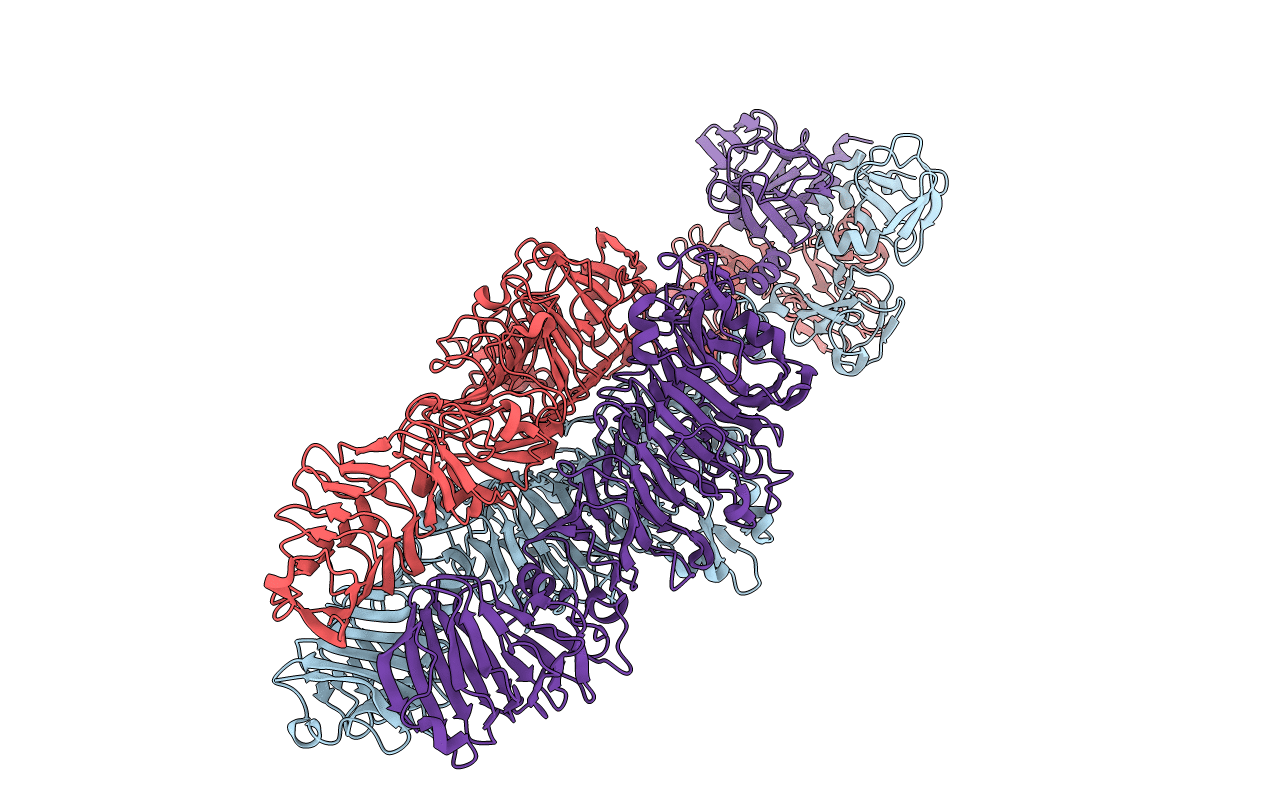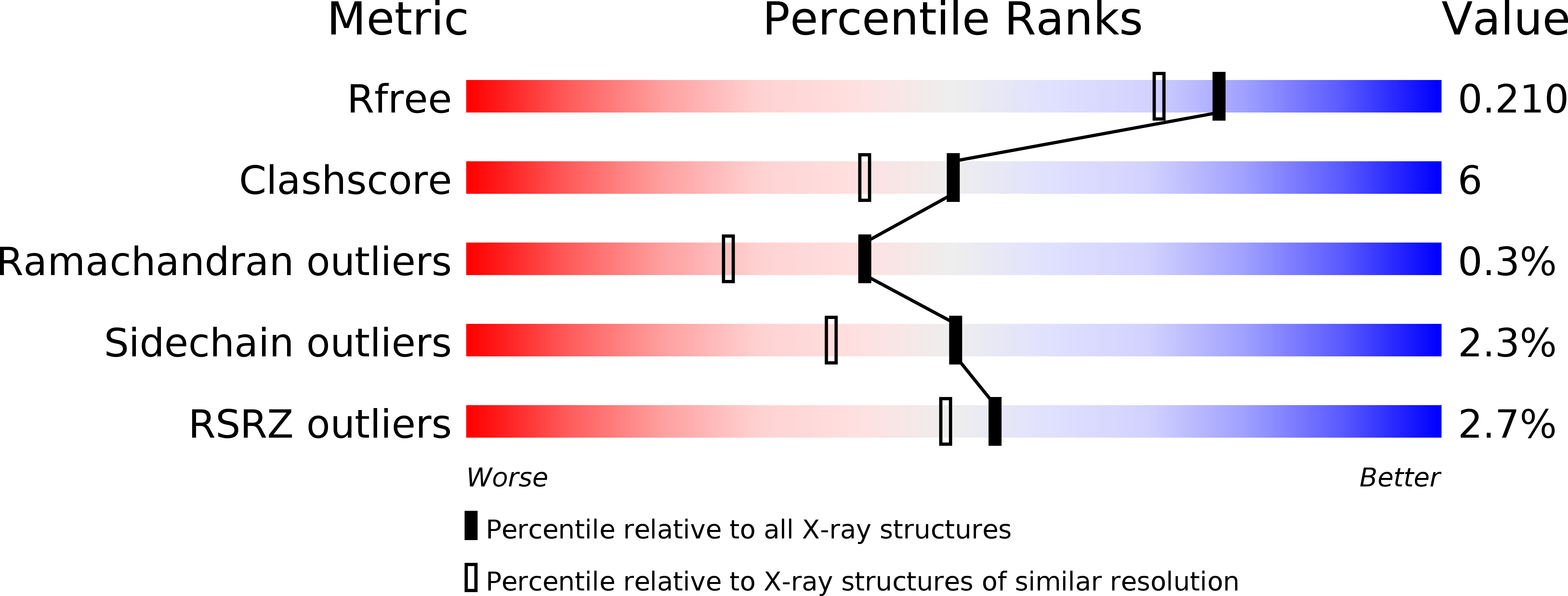
Deposition Date
2014-01-20
Release Date
2014-03-26
Last Version Date
2024-10-30
Entry Detail
PDB ID:
4OJ6
Keywords:
Title:
Crystal Structure of a Putative Tailspike Protein (TSP1, orf210) from Escherichia coli O157:H7 Bacteriohage CBA120; Se-Met Protein
Biological Source:
Source Organism:
Escherichia phage Cba120 (Taxon ID: 1077152)
Host Organism:
Method Details:
Experimental Method:
Resolution:
1.80 Å
R-Value Free:
0.20
R-Value Work:
0.18
R-Value Observed:
0.18
Space Group:
P 21 21 21


